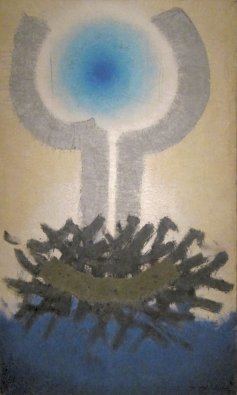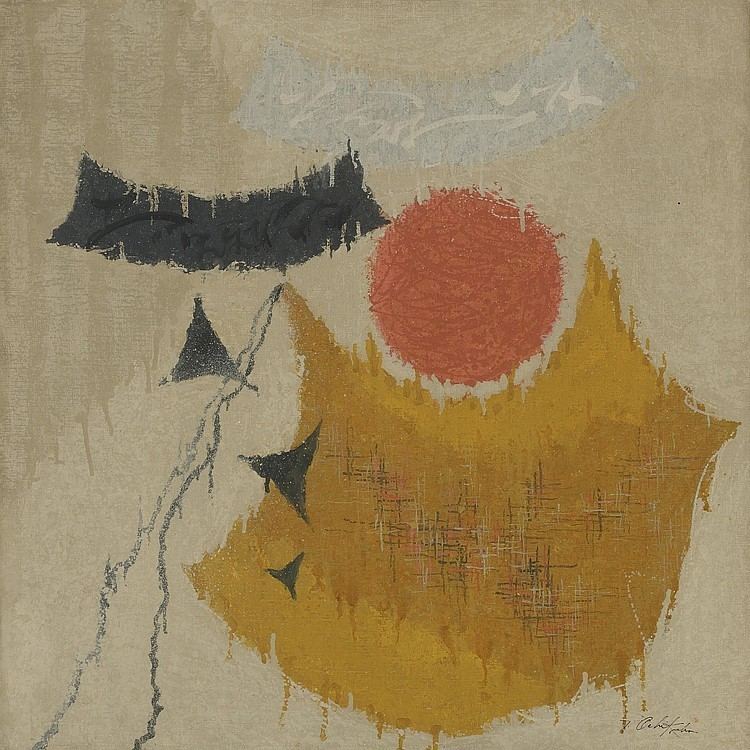Name Tetsuo Ochikubo Role Artist | Died 1975 | |
 | ||
Awards Guggenheim Fellowship for Creative Arts, US & Canada | ||
Tetsuo Ochikubo (1923–1975), also known as Bob Ochikubo, was a Japanese-American painter, sculpture, and printmaker who was born in Waipahu, Hawaii, Honolulu county, Hawaii. During the Second World War, he served with the 100th Battalion of the 442nd Regimental Combat Team. After being discharged from the Army, he studied painting and design at the School of the Art Institute of Chicago and at the Art Students League of New York. He worked at Tamarind Institute in the 1960s and is best known for his entirely abstract paintings and lithographs. Along with Satoru Abe, Bumpei Akaji, Edmund Chung, Jerry T. Okimoto, James Park, and Tadashi Sato, Tetsuo Ochikubo was a member of the Metcalf Chateau, a group of seven Asian-American artists with ties to Honolulu. Ochikubo died in Kawaihae, Hawaii in 1975.
Contents
- Education
- Positions Held
- Honors and Distinctions
- Selected Permanent Collections
- Major Commissions in Hawaii
- One Man Shows
- References

Tetsuo Ochikubo's comments on art.

"My ultimate purpose in painting is to be an artist of substance and consequence; to understand and to be understood. I am confident in my work and have progressed, sometimes painfully, surely but slowly.
I can think of nothing finer than to achieve a personality of minimum weakness, to be able to understand life in its thousands of facets, to eliminate arbitrary and contrary truth, to have the function and command of beauty at the tip of my brush. In every way, painting is the medium for achieving my ultimate purpose.
My world is unique. I understand many facets of both East and West. If this area is truly manifest, it is a genuine universal art.
I use symbols, non-symbols, and nature to achieve my artistic objectives. While creating, I express only the affection of my subconscious feeling.
Why do I paint the way I paint? This is the old question for which there is no direct answer. For example, one master said to another, 'I play with six lions.' The other replied, 'I play with one lion.' My art is for myself and no more.
To sit and contemplate is only for fools. As an artist, you must have the plastic proof.
If you want to learn to paint, go out and talk to the trees. If you do not understand her, nature can be a hole out of which there is no escape.
If consistency signifies growth and knowledge, it can also be the oppressor of creativity."
These were the words of Tetsuo Ochikubo, edited by Dr. Laurence Schmeckebier, who was the Dean of the School of Art, Syracuse University.
"In the olden days, if you were going to be an artist you would starve; so my mother didn't want me to be a fine artist. [After the war] I worked as a commercial artist; then I went to Chicago and New York to study fine art. I painted every day, about sixteen hours a day. My wife worked, and so I didn't. As weeks went by I would put less time into my painting because I would get exhausted; so I thought I would do something physical to relax my mind. I started to do carpentry work -- fixing furniture -- [and then turned to printmaking].
An artist should do everything he wants to do. When he gets up in the morning and says, "I want to do a sculpture!" he should be able to go out and do a sculpture. Next morning he can say, "I don't want to do sculpture, I want to print," and then be able to do printing.
I don't classify myself as an abstract artist. If the feeling is abstract, then yes, I am painting abstract -- the feeling and the subconscious emotions are slowing pushed out. Whenever I have an idea, I put it down on paper. I see rocks and tree formations. I get a lot of ideas from nature.
I enjoy printmaking, but it's all physical labor once the design is made, and then I don't have any pleasure in it. My favorite way of printmaking is lithography, somethings combined with etching. Black-and-white is one thing, but with color graphs. you can cut out shapes and put them together like a jigsaw puzzle.
I feel I understand the East and the West. Now my influence is very Oriental. I am very inclined to Oriental philosophy."
This interview was recorded by Francis Haar, only a few months before the artist's death on October 26, 1975. The transcript of the taped interview was edited by the artists widow, Jeanie Ochikubo, and printed in the book Artists of Hawaii, Volume 2.
